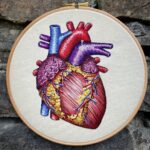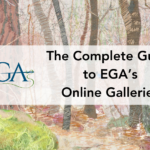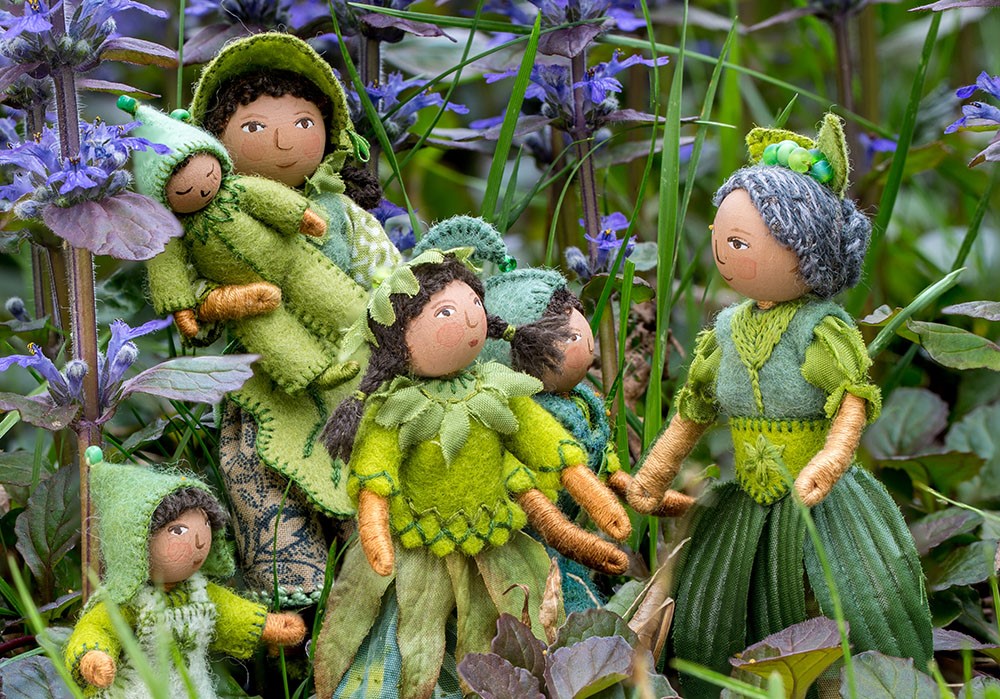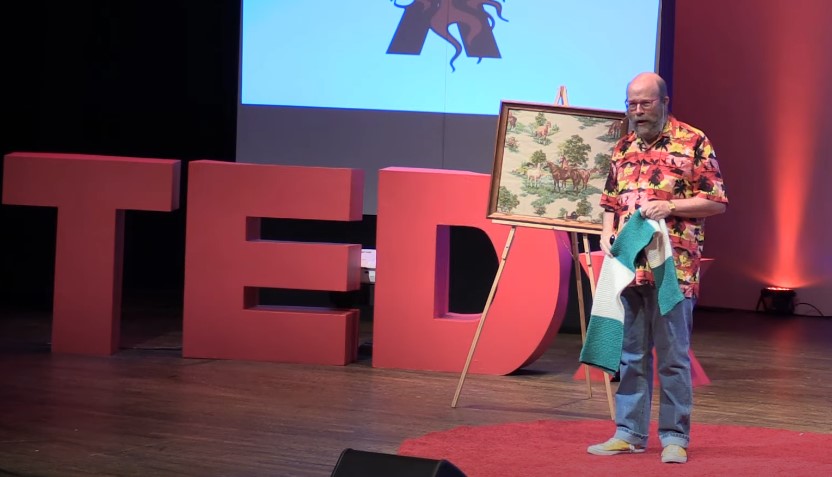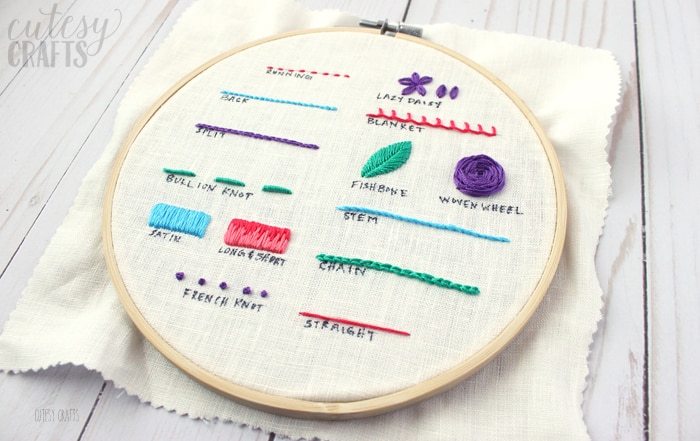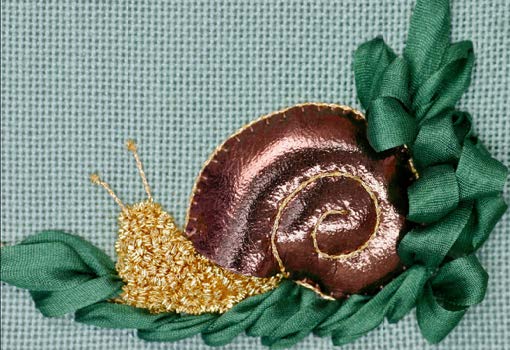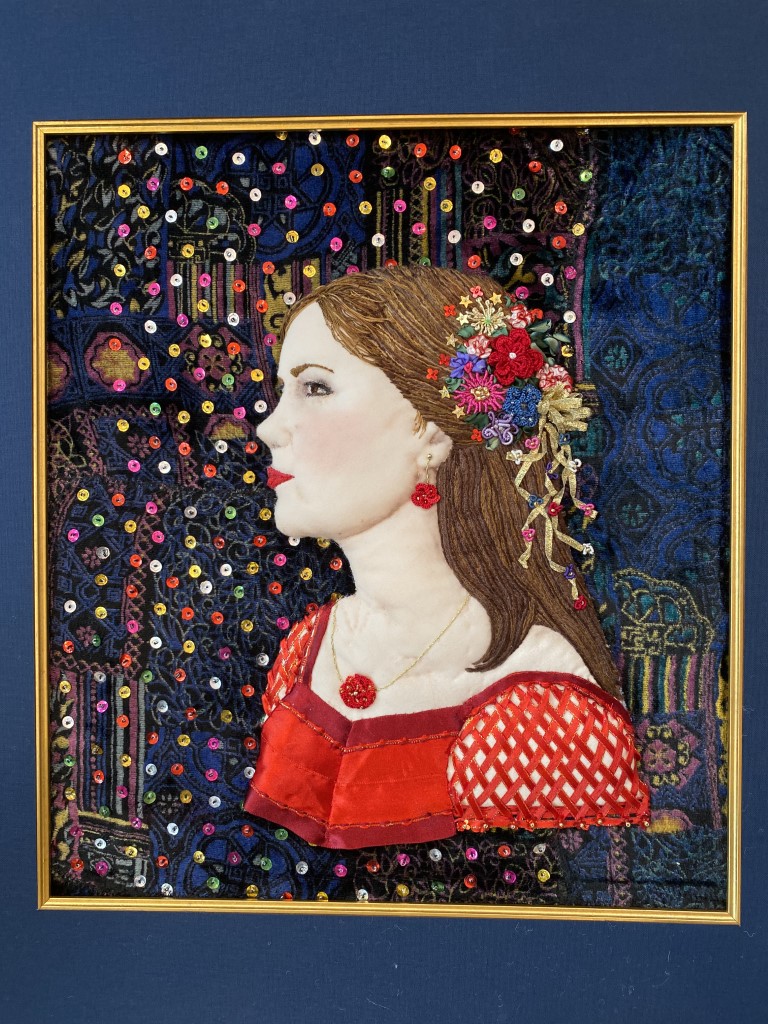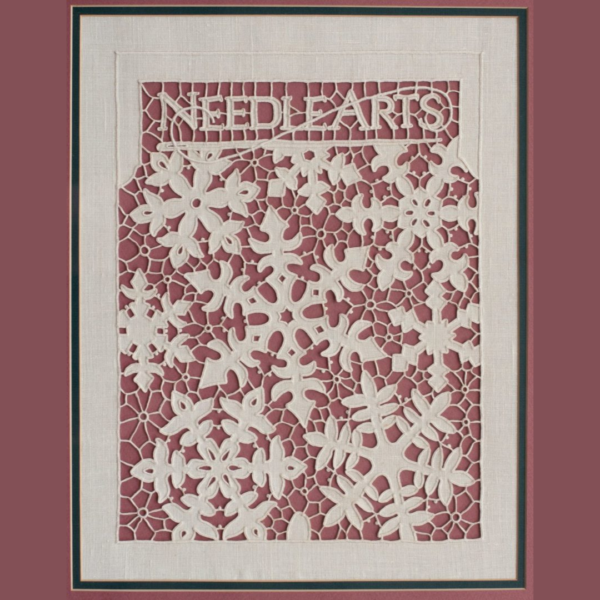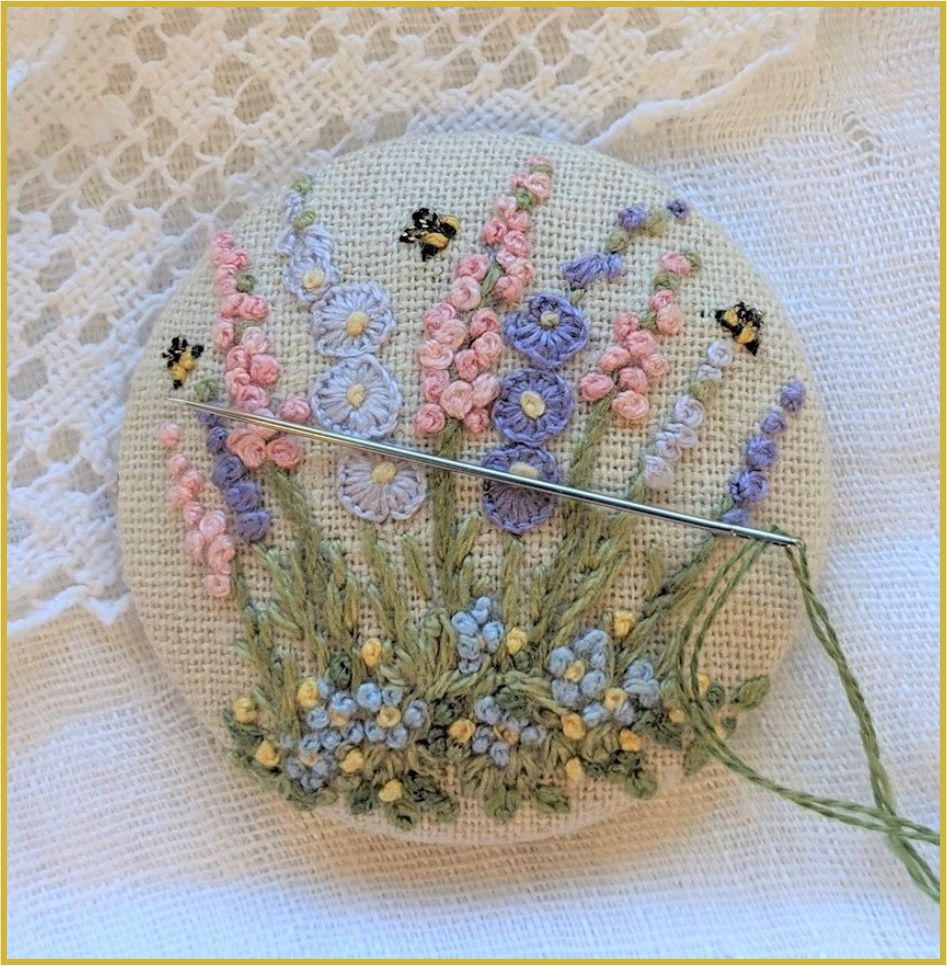If you follow the Embroiderers’ Guild of America on our social media accounts (Instagram, Facebook), you’ve likely seen the work of Judith Copeland. In just the last handful of years, Judith has returned to the needlework community with an admirable dedication and passion. Her Instagram account has become a source of constant inspiration. From showcasing her own needlework pieces as well as the works of fellow artists to capturing EGA chapter gatherings, sharing highlights from fiber exhibitions, and illustrating her own skills progression across various needlework disciplines, Judith’s presence adds so much to our community. Judith “more or less considers herself a beginning to intermediate stitcher” and was quick to express that she wasn’t certain whether she was worthy of a community spotlight. We vehemently disagree! Talking to Judith, following her on social media, and gaining this insight into her needlework journey provides an illuminating view of the stitchers that make up the EGA community.
When did you first start embroidering? What did you make?
I started in 4th or 5th grade, but there was a long hiatus after that. When we were cleaning out my parents’ house a number of years ago, I found my Junior Girl Scout handbook with the embroidered picture of a colonial Minuteman I had done as a requirement for the Needlework badge tucked inside. Not only was it a sad choice of subjects for me, but the self-taught stitching by my ten-year-old self was atrocious. It’s no wonder it took me another 50 plus years to come back to embroidery.

How did you learn about EGA? Which chapter do you belong to?
I learned about the EGA through an internet search. When I got interested in embroidery (thinking it might be good for the chemo-related neuropathy I was experiencing in my hands), I figured there must be an organization or group devoted to that and within an hour or so, I had signed up online. Initially, I joined the EGA as a member at large, but quickly knew that I wanted the deeper connections and educational opportunities that come from belonging to a chapter.
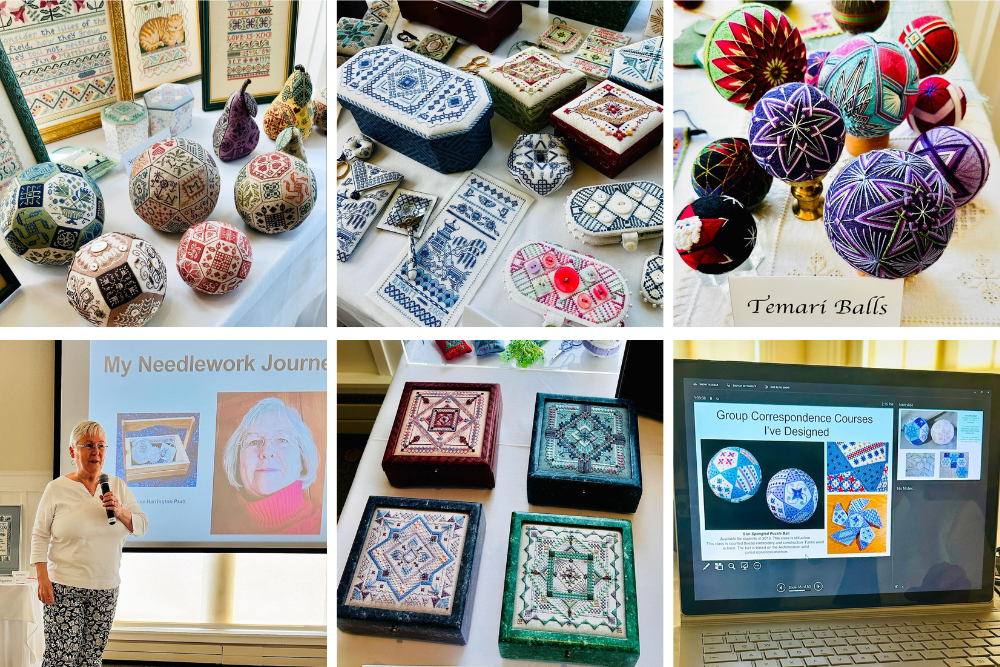
I live in New Hampshire and there is no chapter here, but after a little shopping around, I found what to me feels like the perfect fit in the Southern Maine Chapter. It’s a little bit of a hike for me to travel to Maine each month, but it’s a pretty drive and well worth the travel time invested. I’ve been a member there for the last few years and now co-chair (along with EGA Board Member Vicki Swerdlow) one of the SOME Chapter area groups.
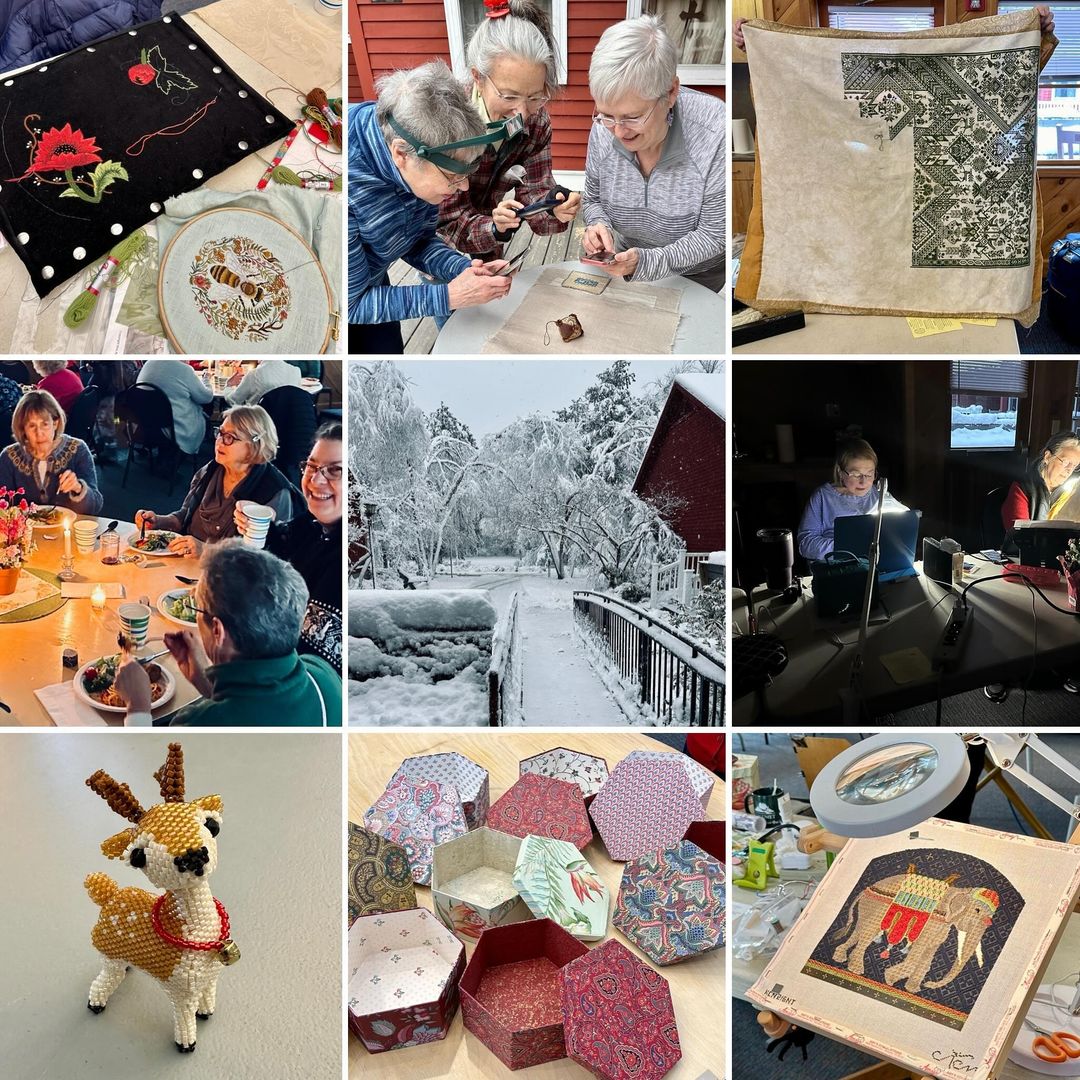
Which classes have you taken at EGA?
I have been fortunate enough to attend two national seminar meetings–the one in NYC and the most recent one in Boston. My favorite classes at those events were the Spider Mum class with Kat Diuguid (whom I credit everytime I get my long and short stitches right!) and Kris Andrews’ Octopus Huswife class.

Denise Harrington Pratt is a member of my chapter and even though I am not a counted thread person, I will take anything she offers. Her finishing techniques (and her ability to teach them) are superb. I’ve taken a few things offered by the EGA on-line, some more successful than others.
Marsha Michler’s Freestyle Hoop Embroidery class was one I particularly enjoyed. Sometimes I “dip across the pond” and explore the offerings of the Embroiderers’ Guild UK and Sue Stone’s Textile Arts Stitch Club, especially when I feel the urge to work with more experimental materials or techniques.
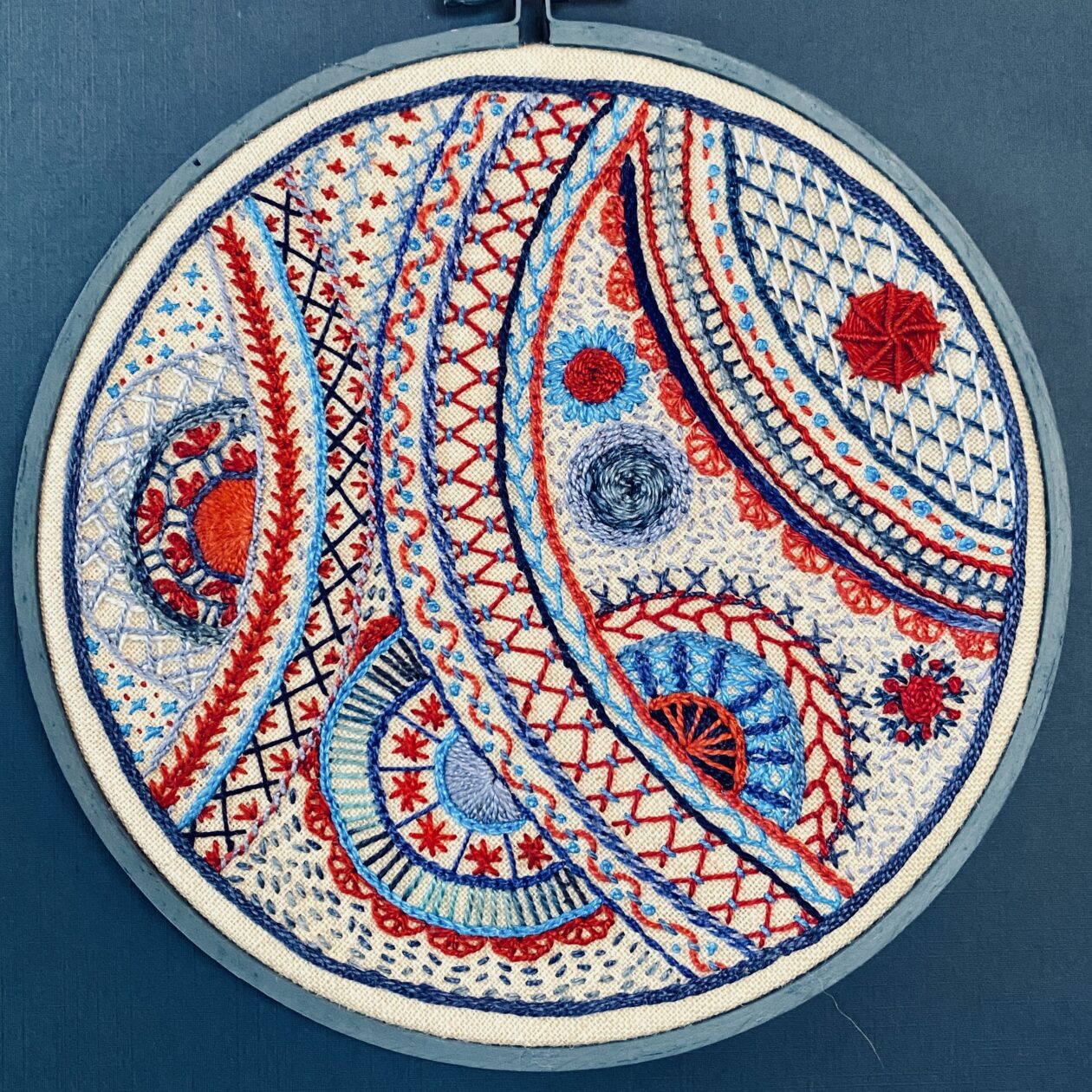
What is your favorite kind of embroidery to do?
I will try absolutely anything, and so far in my trials, surface embroidery and crewel are my favorites. While I deeply admire the counted work, blackwork, and beadwork that many of my chaptermates do, I just don’t have the eyesight to do that kind of work comfortably, even with magnification. I had a stem cell transplant for multiple myeloma in 2015 and unfortunately blurred vision is one of the side effects of the maintenance chemo I am on. As much as the geometry of counted work appeals to me, my vision seems to blur even more quickly when I try working back and forth from a chart. But fortunately, the world of embroidery is a wide one and there are lots of things I can do.
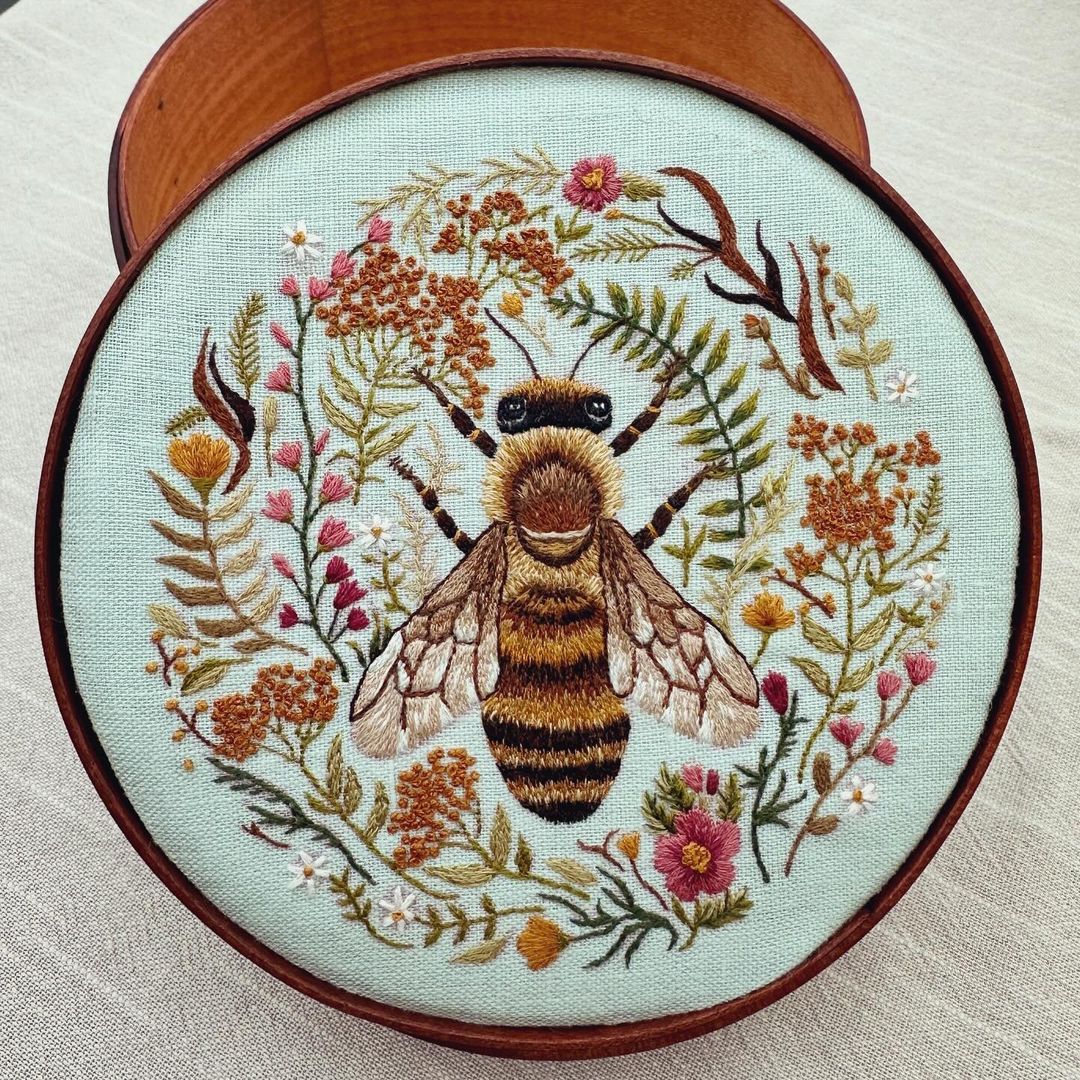
You recently took a trip to Turkey. Did you see any fun needlework or textiles on your travels? Did you learn anything new?
Sitting as it does on the Silk Road, Turkey has an incredibly rich textile tradition. We visited a carpet collective and a very patient woman sat me down at her loom and taught me how to do the double knot they use in Turkish carpets.
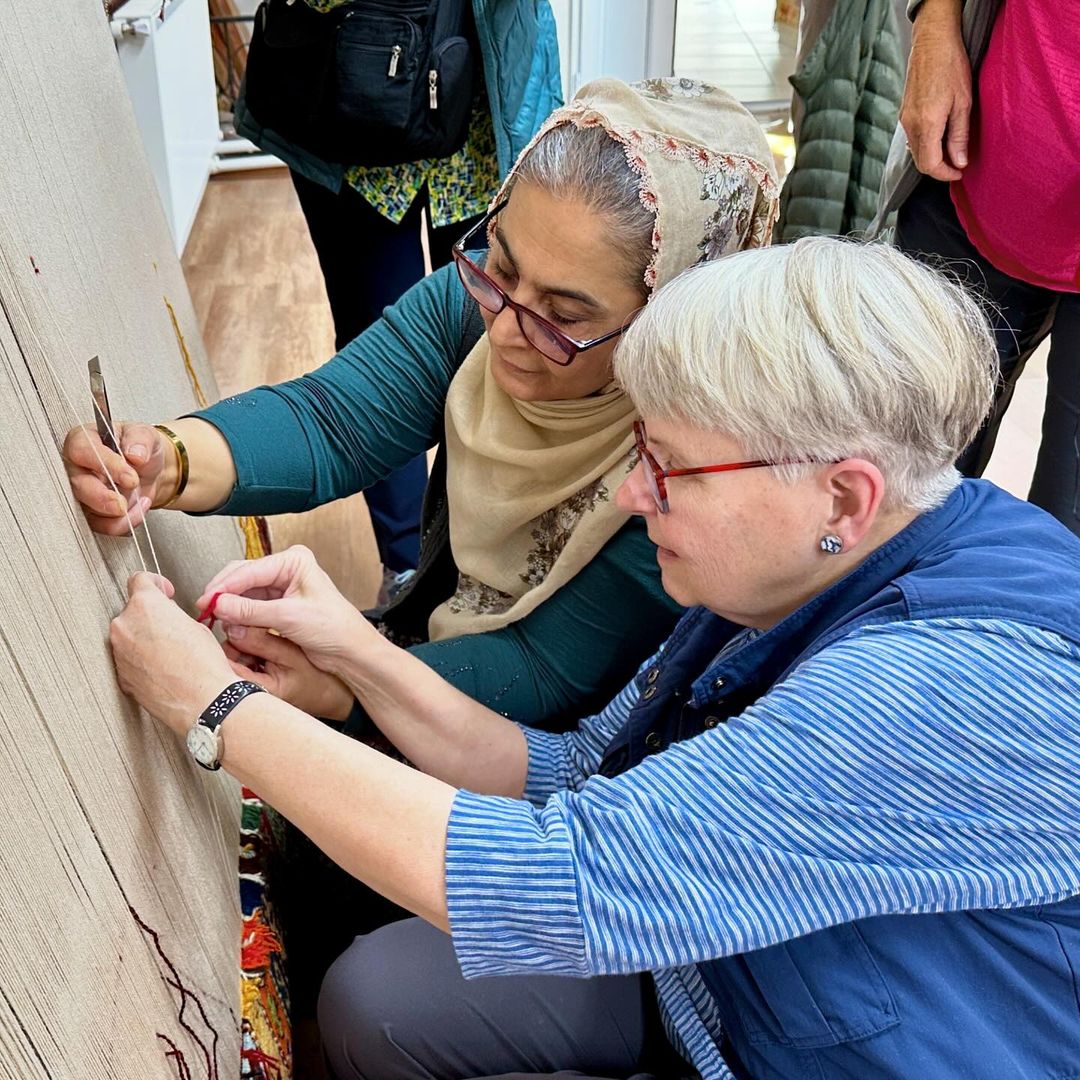
At the Topkapi Palace in Istanbul I missed just about everything else because I spent all my time drooling over the incredible garments in the Sultan’s clothing collection.
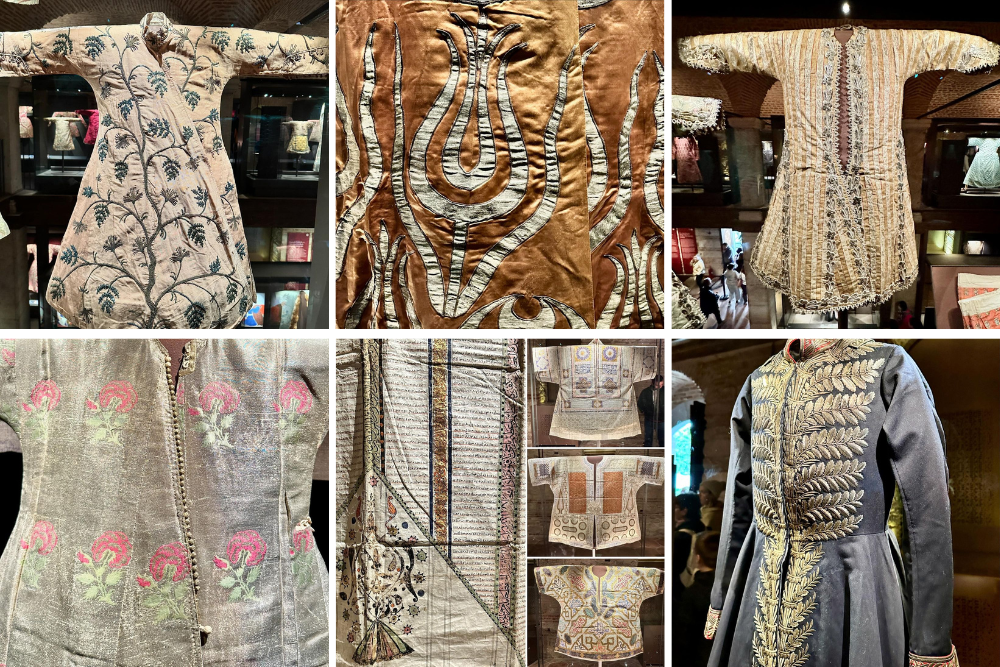
But perhaps the thing that was most unexpected was discovering Oya–the delicate needlelace edgings and floral work that is used to embellish just about everything, but especially the head scarves worn by so many Muslim women. I didn’t know anything about Oya before I went, but having picked up some Oya needles at a needlework store just outside the Grand Bazaar and having tried a little on my own since coming home, I bow in deep respect. It is so hard!
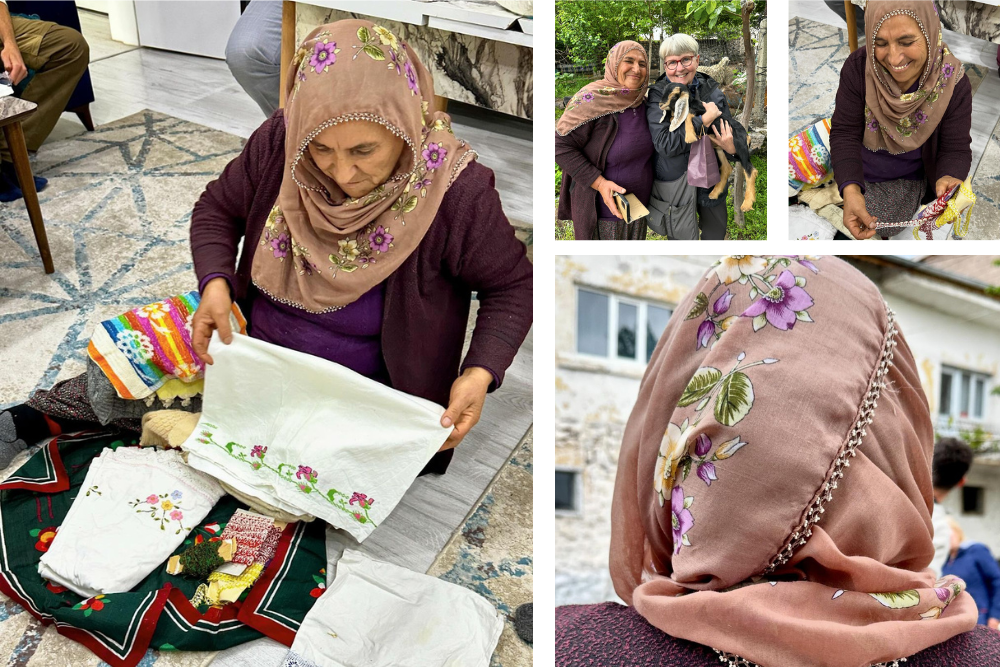
Where else have you traveled to take in needlework history? Do you travel with a needlework destination in mind, or do you travel and then seek out the needlework associated with your destination?
Oh gosh, I have been really lucky. My partner of the last six years loves to travel, has the means to do so, and is responsible for the trips we have taken to Sicily, Israel, Germany, Russia, Estonia, Denmark, Sweden, Hungary, Croatia, Bosnia, Slovenia, the Dolomites, Chile, and even Antarctica. No textiles there, but we saw some great needlepoint kneelers depicting local life at a Falkland Islands church we visited enroute.
I have not persuaded him to sign us up for an official “textile tour”, but he is very patient when I seek out textile detours along the way. Before retirement, he was a builder and developer, so we have this deal–he is willing to go along with my textile focus, just so long as I am willing to stop at any of the construction sites he spots along the way. Actually, he’s become more and more appreciative of textile traditions and still talks about the wizardry of the bobbin lacemaker we visited in Slovenia.
Your Instagram profile has become a chronicle of stitching adventures, capturing your own work, the work of fellow embroiderers, museum pieces, exhibits and more. You’ve become an embroidery influencer! What inspired you to start capturing needlework pieces for Instagram?
At something like 875 followers, it’s a bit of a stretch to call me an Influencer! My Instagram account (@nhstitching) is really just a personal diary–it helps me remember the things that I’ve seen and the things that I’ve stitched. I do try and post regularly (three or four times a week) and one of these days I may get serious about it and learn how to do videos, reels and captions, but for now, it’s mostly photos and a bit of text about the textile part of my life.
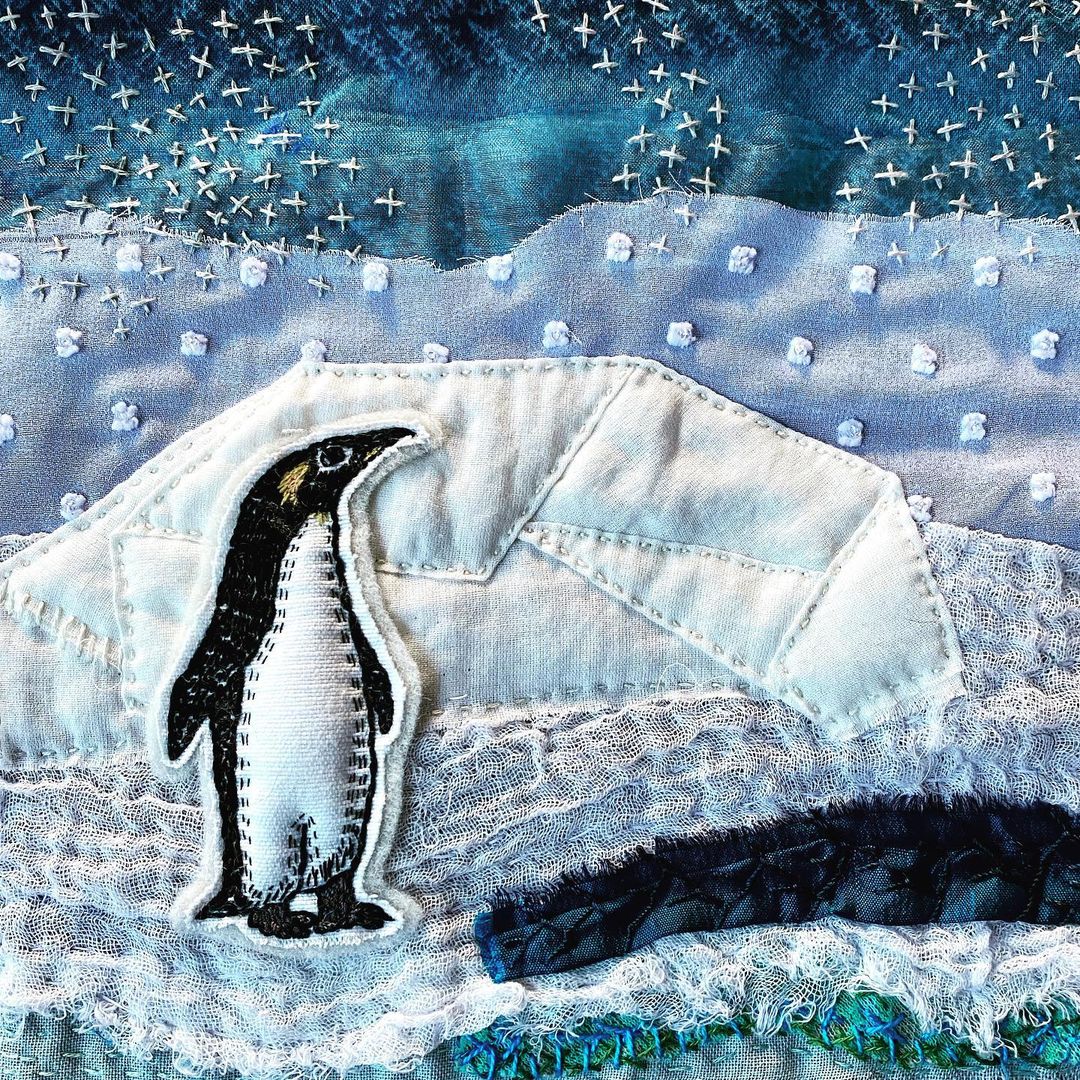
Initially, it was probably a way for me to redirect my energy when I retired from a profession that I deeply loved (as a United Church of Christ pastor). As the account has evolved, I now find myself chronicling my recent foray into rughooking (very much an Atlantic Maritimes thing), as well as field reports from the local history museums we try to get out and visit here in New England.
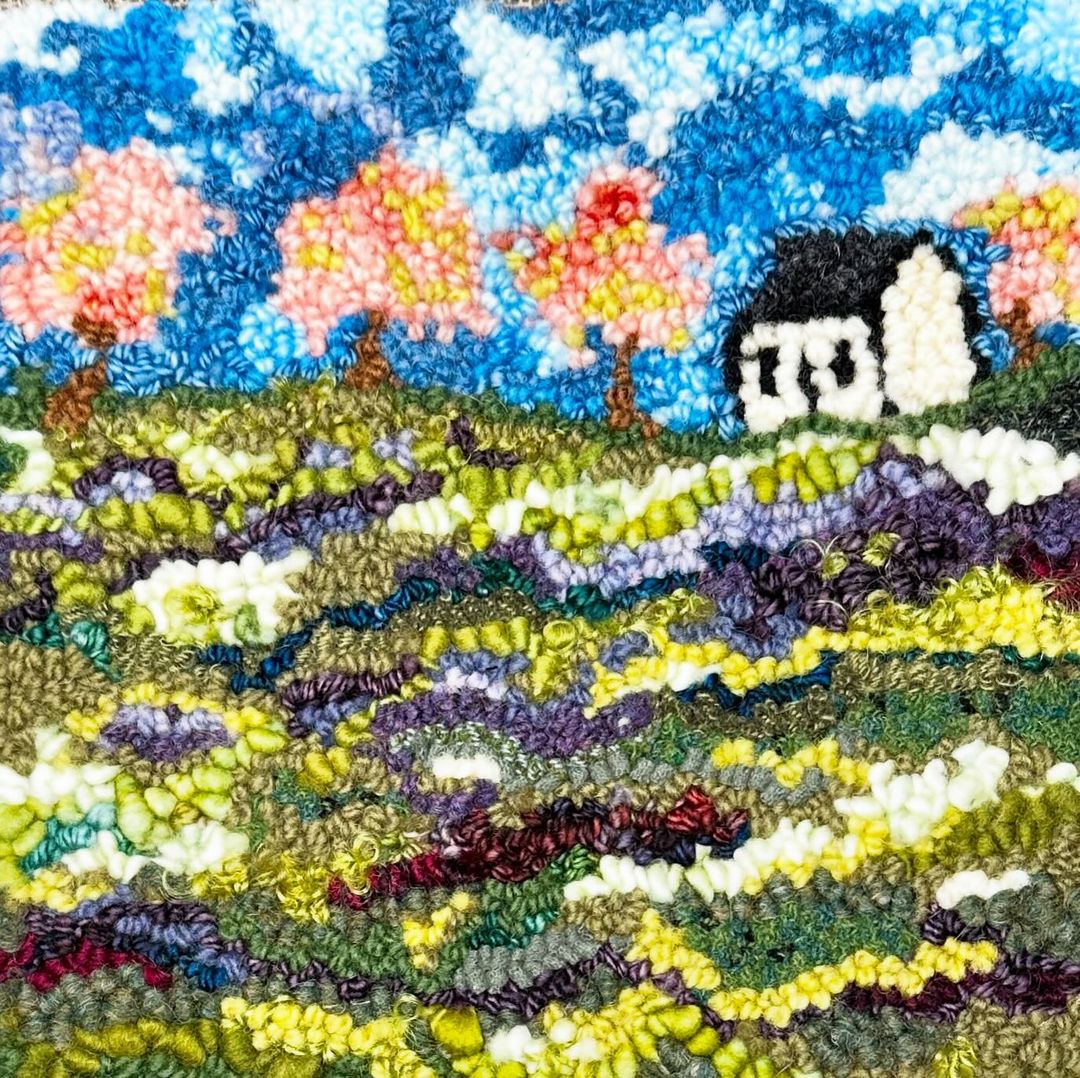
Many of these are run by volunteers, are only open for a few hours a week, and often just in the summer. They have eclectic and sometimes even wacky collections, but occasionally you find a real textile treasure which I try to photograph and share. And then there is what I informally call “The Department of Abandoned Needlework”, mostly items I find and take home for free from our local dump–No Stitched Piece or Textile Tool Left Behind.
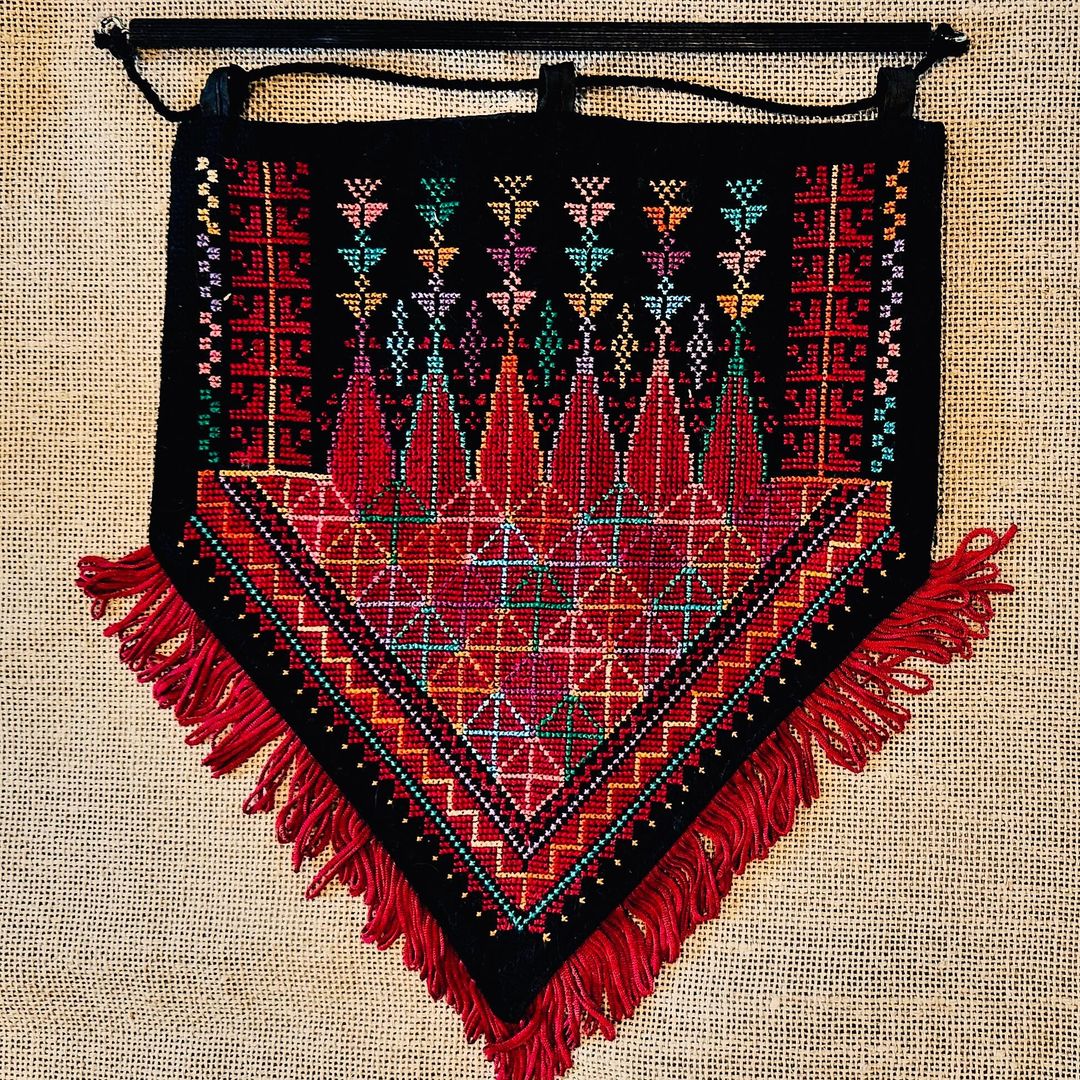
What style of needlework currently fascinates you?
There is some bargello and colorwork in my immediate future. The Bay Pine Needlers (my area group within the Southern Maine Chapter) borrowed the EGA Study Box on Bargello and Florentine Work this past year, and thanks to a superb presentation by one of our members, we have a group getting ready to do the Bargello and Design GCC with Gail Stafford. It’s nicely timed for me, as I will be traveling to Florence in September and hope to see some Florentine work in situ. I am also very interested in color (as it applies to both embroidery and rug hooking), and have just signed up for Carole Rinard’s Rainbow Bend Course in Color Theory.
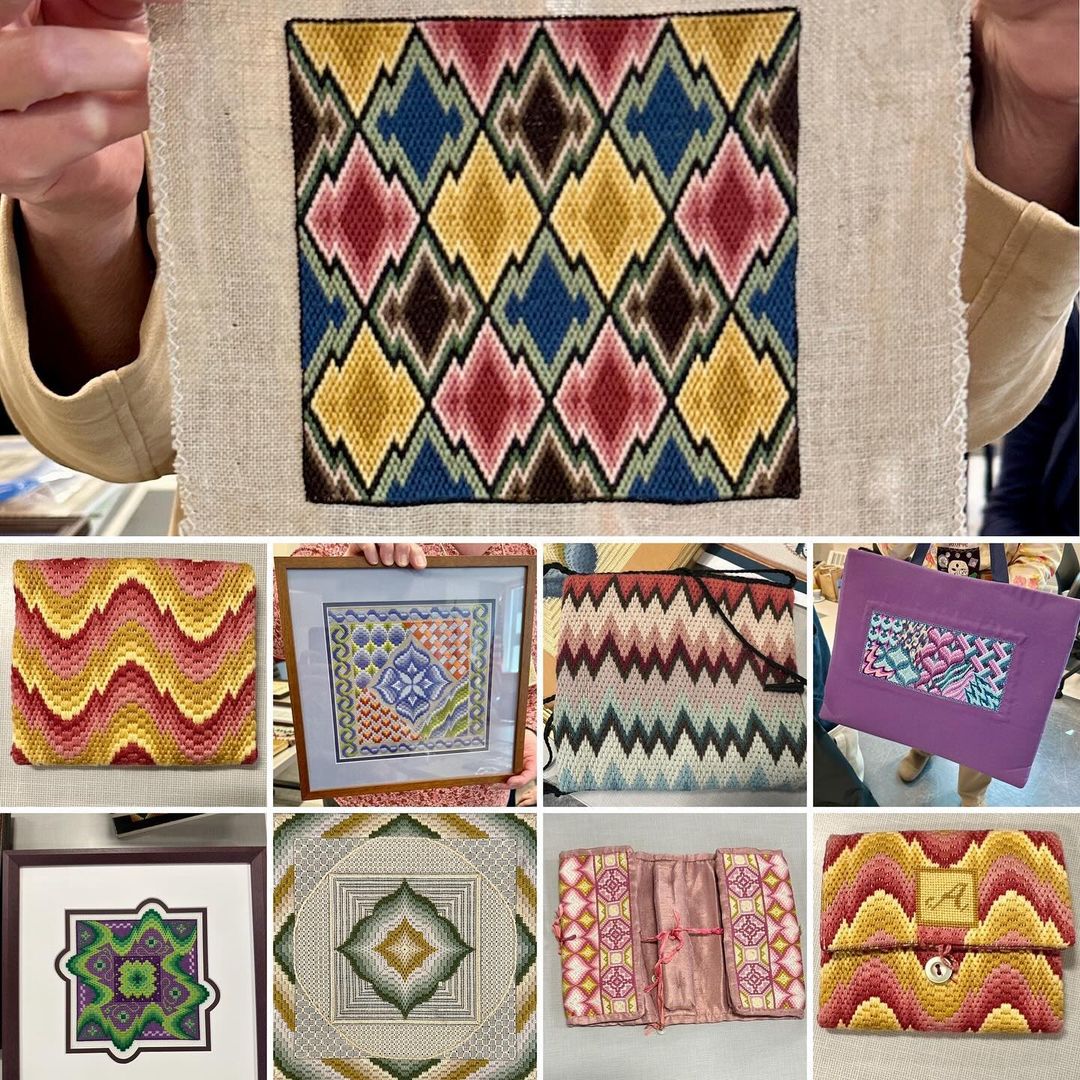
You’ve made and shared so many beautiful pieces of needlework. Do you have a favorite finished piece?
Thank you. I suppose it depends what room I’m in and what I’m looking at. When I’m in my living room it’s the Tatreez sampler that I did with Wahid Ghnaim, who gave an EGA lecture a little while back. Each week as we took up a new pattern, we learned the often tragic history of a different Palestinian village. And now, in light of the unspeakable things that are happening in Gaza, the piece has taken on even deeper meaning for me. I am a huge fan of the work Wahid and others are doing to use embroidery as a way of preserving Palestinian culture at a time when some want to see it erased.
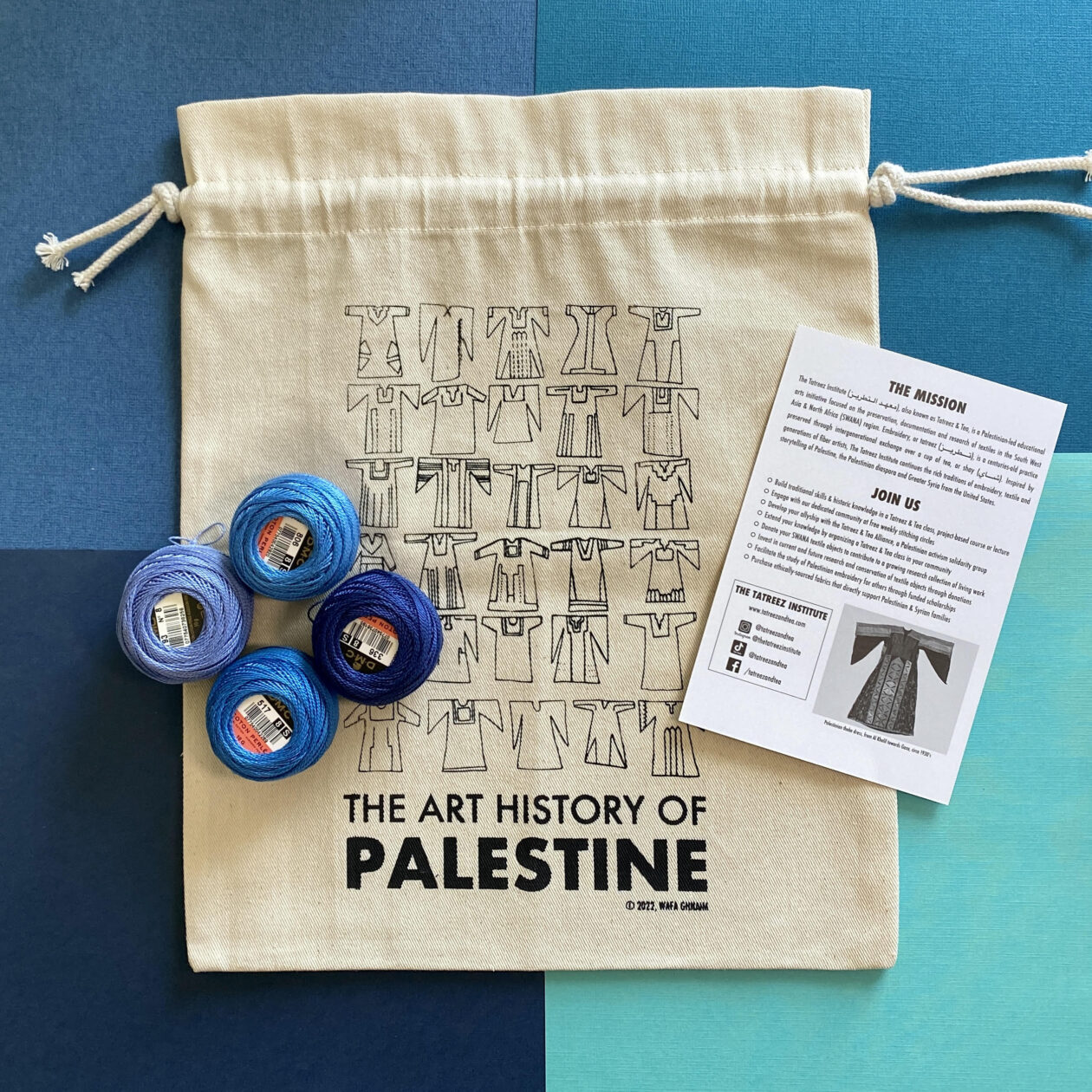
When I’m in my study/sewing room, my favorites are the Schoolgirl Globe or Garden Flower pincushion (both SOME Chapter stitchalongs) or maybe the Octopus Huswife (from a class at the 2023 EGA Seminar held in Boston). Those pieces hold nice memories of having been stitched alongside friends.
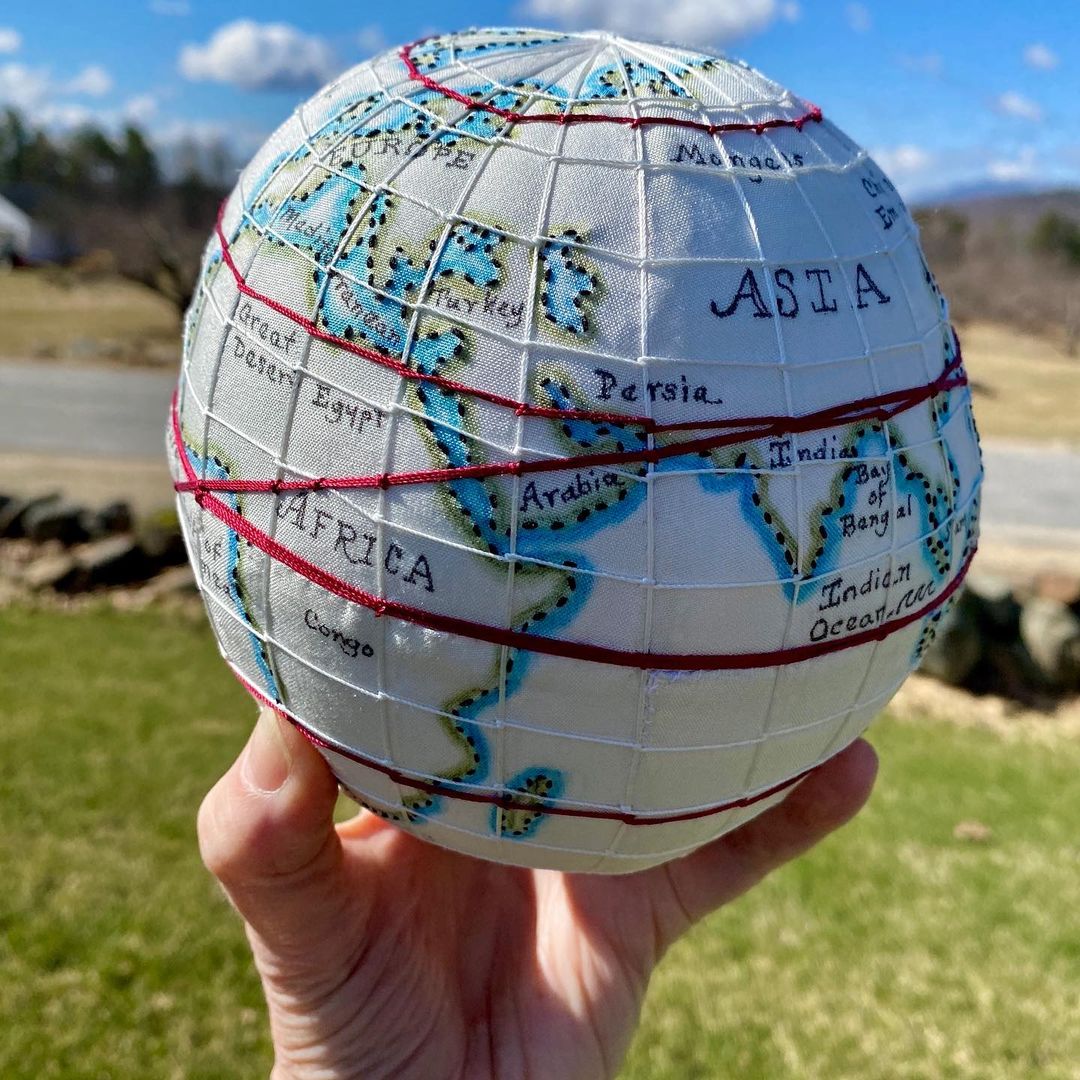
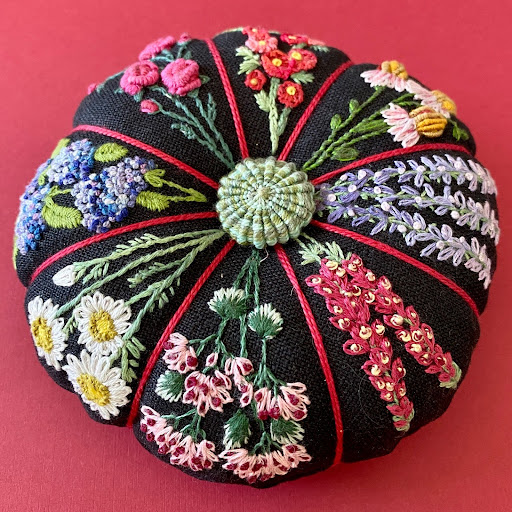
What are you currently working on?
I am trying to finish up a second piece from Emillie Ferris’ book Paint With Thread. A bunch of us got together weekly over the winter via Zoom to do the Honeybee piece from that book, and being a sometimes frugal Yankee, I guess I wanted to make sure I got my money’s worth out of the book and am now close to finishing the Sunflower piece. After that, I want to finish two pieces from the Kris Andrews classes I took at the SOME Chapter 2024 Spring Getaway. One is a poppy purse stitched in wool on black velvet and the other is a huswife–very delicate stitching on the most beautiful celadon colored silk.
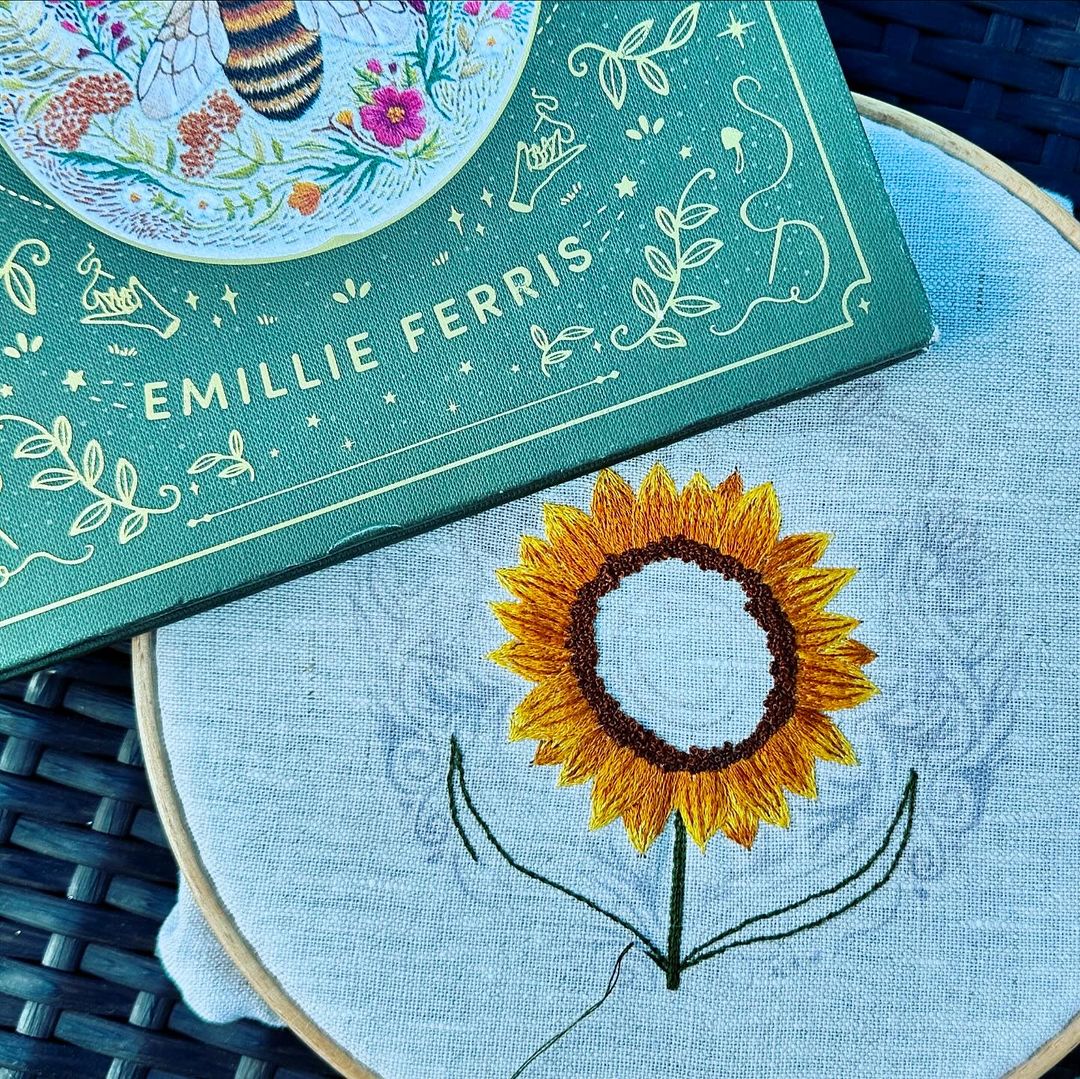
As someone who came to needlework later in life, what advice would you give to someone interested in pursuing the craft?
Embrace being a beginner. It is so much fun! At the end of a forty year professional career, I was expected to know how to do a certain number of things and to do them with a certain level of expertise. But as a novice in the needlework world, there are no such expectations. I can try new techniques, pick up things and put them down, make ugly stitches, explore and go down time-consuming rabbit holes, and most of all, just PLAY.
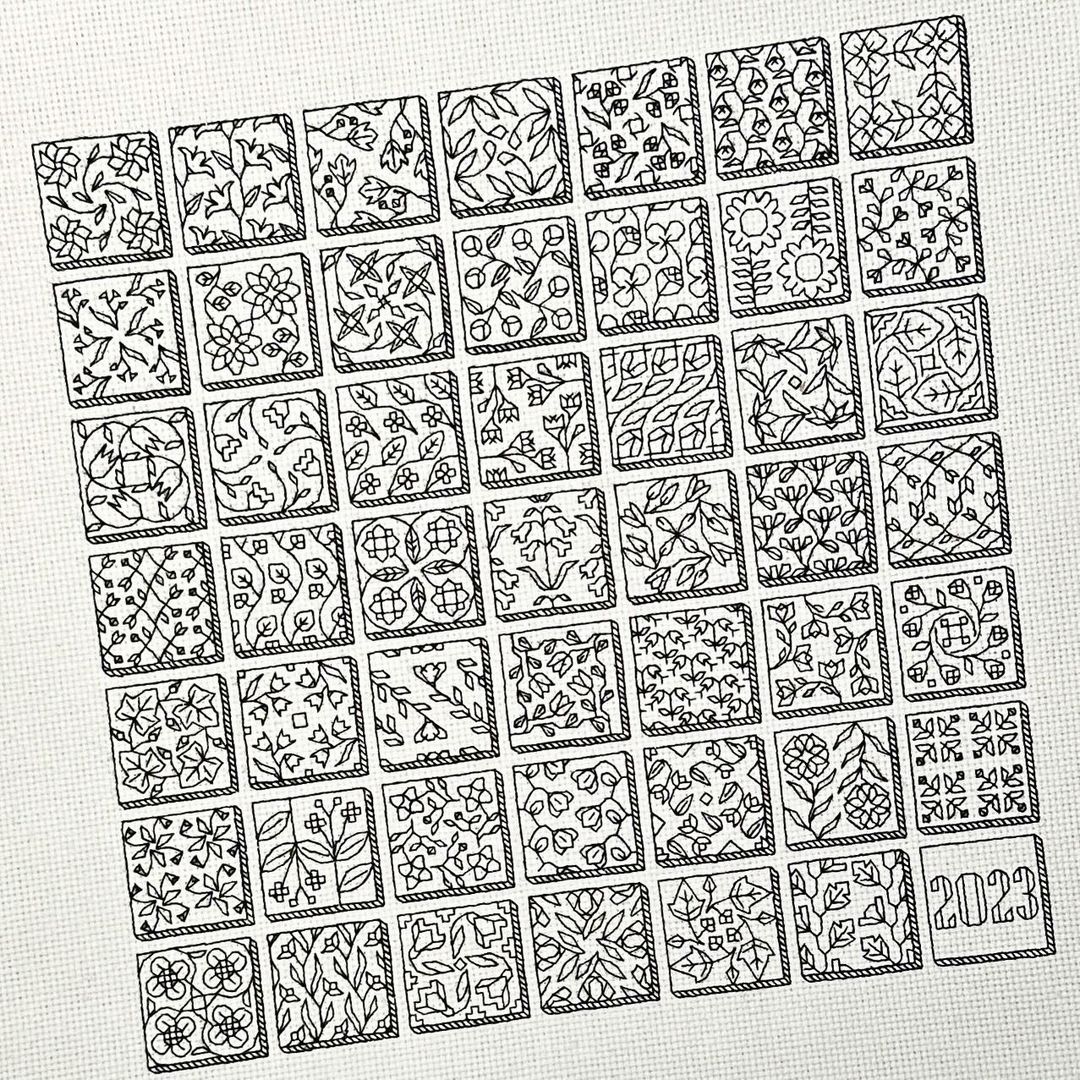
The other piece of advice I would offer is to get involved in an EGA Chapter. I am so glad that I converted my membership from at large to a local chapter. In addition to the educational and retreat opportunities I have enjoyed, the members of my chapter have been overwhelmingly generous with their encouragement, their gently shared expertise, and their friendship.
Thank you so much to Judith for being so generous with her time and sharing such wonderful insights into her needlework journey!

